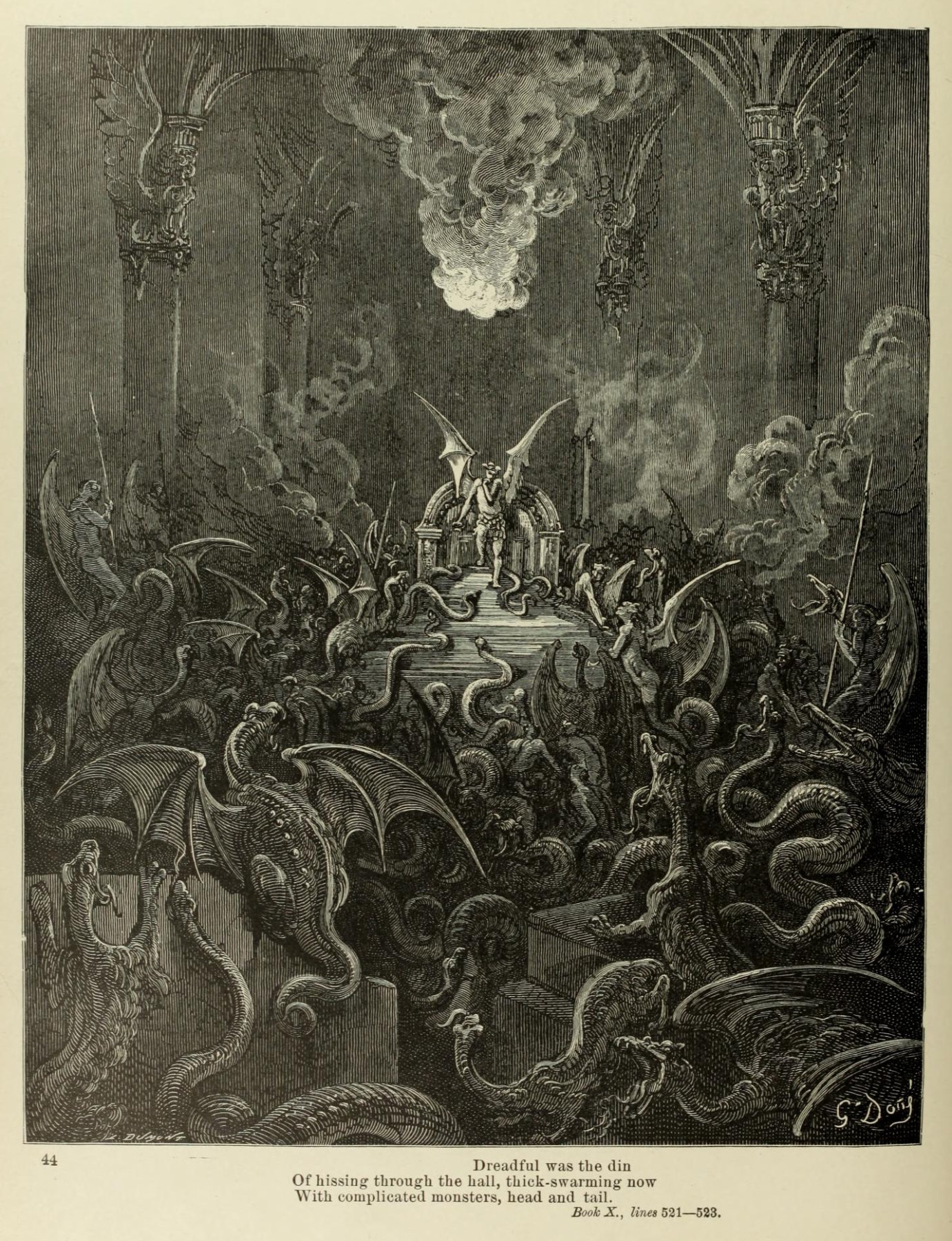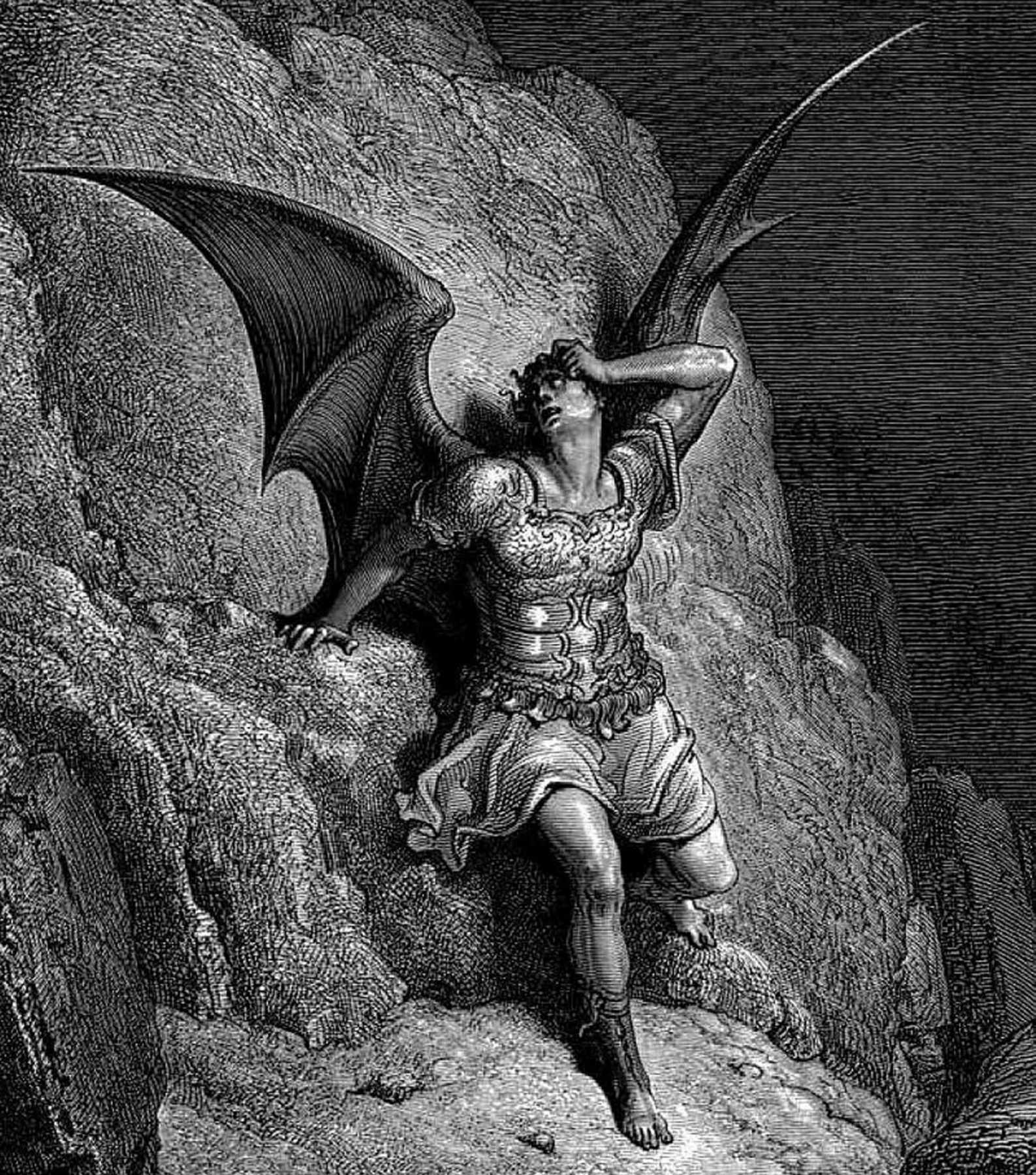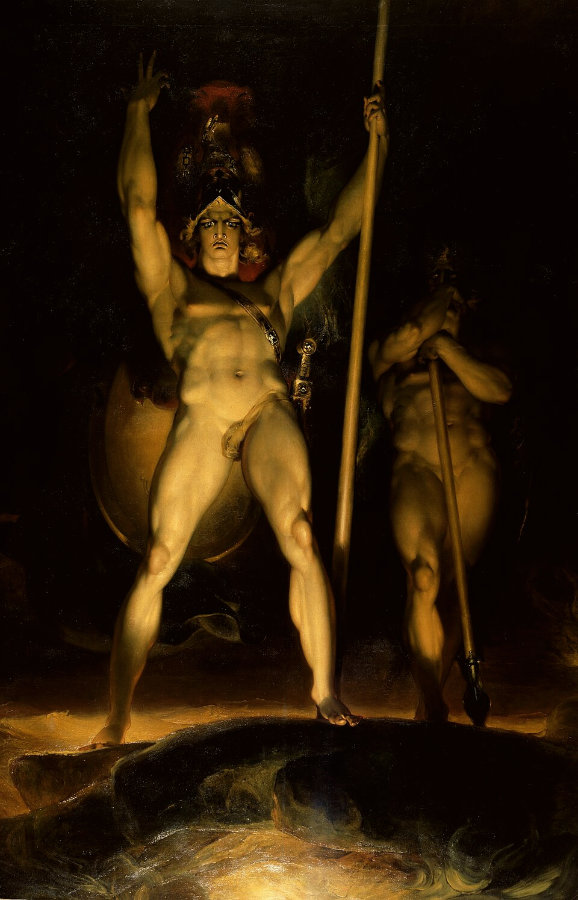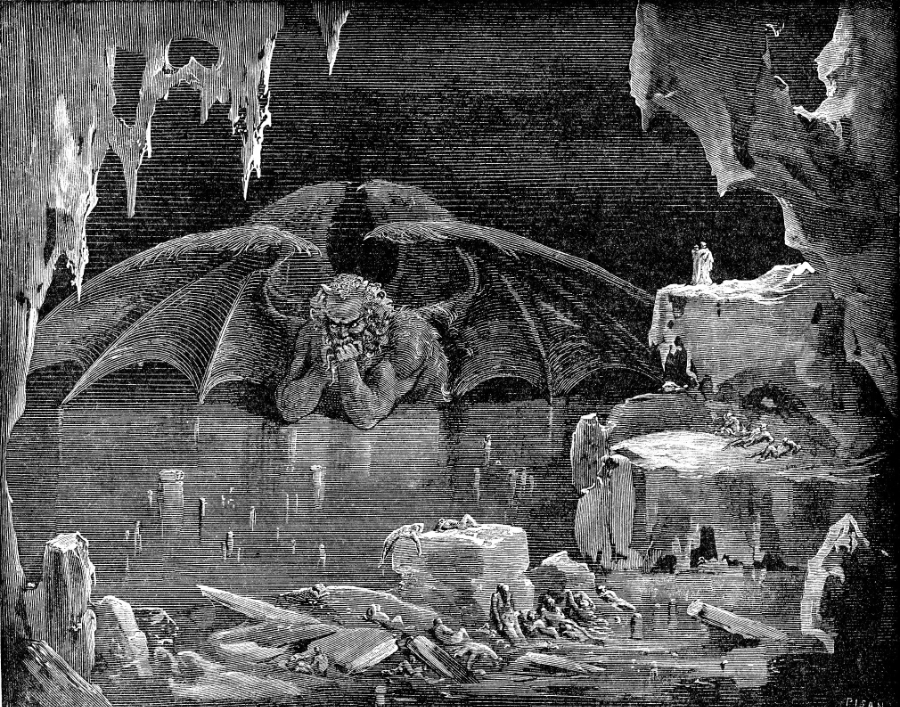Satan, also known as the Devil, and sometimes also called Lucifer in Christianity, is an entity in the Abrahamic religions that seduces humans into sin or falsehood. In Judaism, Satan is seen as an agent subservient to God, typically regarded as a metaphor for the yetzer hara, or “evil inclination.” In Christianity and Islam, he is usually seen as a fallen angel or jinn who has rebelled against God, who nevertheless allows him temporary power over the fallen world and a host of demons. In the Quran, Shaitan, also known as Iblis, is an entity made of fire who was cast out of Heaven because he refused to bow before the newly created Adam and incites humans to sin by infecting their minds with waswās (“evil suggestions”). A figure known as ha-satan (“the satan”) first appears in the Hebrew Bible as a heavenly prosecutor, subordinate to Yahweh (God), who prosecutes the nation of Judah in the heavenly court and tests the loyalty of Yahweh’s followers. During the intertestamental period, possibly due to influence from the Zoroastrian figure of Angra Mainyu, the satan developed into a malevolent entity with abhorrent qualities in dualistic opposition to God. In the apocryphal Book of Jubilees, Yahweh grants the satan (referred to as Mastema) authority over a group of fallen angels, or their offspring, to tempt humans to sin and punish them. Although the Book of Genesis does not mention him, Christians often identify the serpent in the Garden of Eden as Satan. In the Synoptic Gospels, Satan tempts Jesus in the desert and is identified as the cause of illness and temptation. In the Book of Revelation, Satan appears as a Great Red Dragon, who is defeated by Michael the Archangel and cast down from Heaven. He is later bound for one thousand years, but is briefly set free before being ultimately defeated and cast into the Lake of Fire. In the Middle Ages, Satan played a minimal role in Christian theology and was used as a comic relief figure in mystery plays. During the early modern period, Satan’s significance greatly increased as beliefs such as demonic possession and witchcraft became more prevalent. During the Age of Enlightenment, belief in the existence of Satan was harshly criticized by thinkers such as Voltaire. Nonetheless, belief in Satan has persisted, particularly in the Americas. Satan’s appearance is never described in the Bible, but since the ninth century he has often been shown in Christian art with horns, cloven hooves, unusually hairy legs, and a tail, often naked and holding a pitchfork. These are an amalgam of traits derived from various pagan deities, including Pan, Poseidon, and Bes.
| Alias Satan, Devil, Shaitan, Iblis, Mastema |
| Real Names/Alt Names Lucifer |
| Characteristics Villain, Master of Disguise, Trickster, Biblical Figures, Historical Figures, Literary Characters, Deity, Demon, Prehuman Epoch |
| Creators/Key Contributors ○ |
| First Appearance Hebrew Bible / Christian demonology |
| First Publisher ○ |
| Appearance List Literature: Hebrew Bible (Tanakh), Quran, The King James Version of the Bible, Geoffrey Chaucer’s “The Canterbury Tales” (14th century), Dante Alighieri’s Inferno (14th century), John Milton’s Paradise Lost and Paradise Regained, William Blake’s poems and The Marriage of Heaven and Hell (1780). Film: Georges Méliès’ The Haunted Castle (1896), Eye of the Devil (1965), Hammer Film Productions, Rosemary’s Baby (1967), The Exorcist (1973), The Omen (1976), etc. |
| Sample Read The King James Version of the Bible [PG] |
| Description Satan, also known as the Devil, and sometimes also called Lucifer in Christianity, is an entity in the Abrahamic religions that seduces humans into sin or falsehood. In Judaism, Satan is seen as an agent subservient to God, typically regarded as a metaphor for the yetzer hara, or “evil inclination.” In Christianity and Islam, he is usually seen as a fallen angel or jinn who has rebelled against God, who nevertheless allows him temporary power over the fallen world and a host of demons. In the Quran, Shaitan, also known as Iblis, is an entity made of fire who was cast out of Heaven because he refused to bow before the newly created Adam and incites humans to sin by infecting their minds with waswās (“evil suggestions”). A figure known as ha-satan (“the satan”) first appears in the Hebrew Bible as a heavenly prosecutor, subordinate to Yahweh (God), who prosecutes the nation of Judah in the heavenly court and tests the loyalty of Yahweh’s followers. During the intertestamental period, possibly due to influence from the Zoroastrian figure of Angra Mainyu, the satan developed into a malevolent entity with abhorrent qualities in dualistic opposition to God. In the apocryphal Book of Jubilees, Yahweh grants the satan (referred to as Mastema) authority over a group of fallen angels, or their offspring, to tempt humans to sin and punish them. Although the Book of Genesis does not mention him, Christians often identify the serpent in the Garden of Eden as Satan. In the Synoptic Gospels, Satan tempts Jesus in the desert and is identified as the cause of illness and temptation. In the Book of Revelation, Satan appears as a Great Red Dragon, who is defeated by Michael the Archangel and cast down from Heaven. He is later bound for one thousand years, but is briefly set free before being ultimately defeated and cast into the Lake of Fire. In the Middle Ages, Satan played a minimal role in Christian theology and was used as a comic relief figure in mystery plays. During the early modern period, Satan’s significance greatly increased as beliefs such as demonic possession and witchcraft became more prevalent. During the Age of Enlightenment, belief in the existence of Satan was harshly criticized by thinkers such as Voltaire. Nonetheless, belief in Satan has persisted, particularly in the Americas. Satan’s appearance is never described in the Bible, but since the ninth century he has often been shown in Christian art with horns, cloven hooves, unusually hairy legs, and a tail, often naked and holding a pitchfork. These are an amalgam of traits derived from various pagan deities, including Pan, Poseidon, and Bes. |
| Source Satan – Wikipedia |





